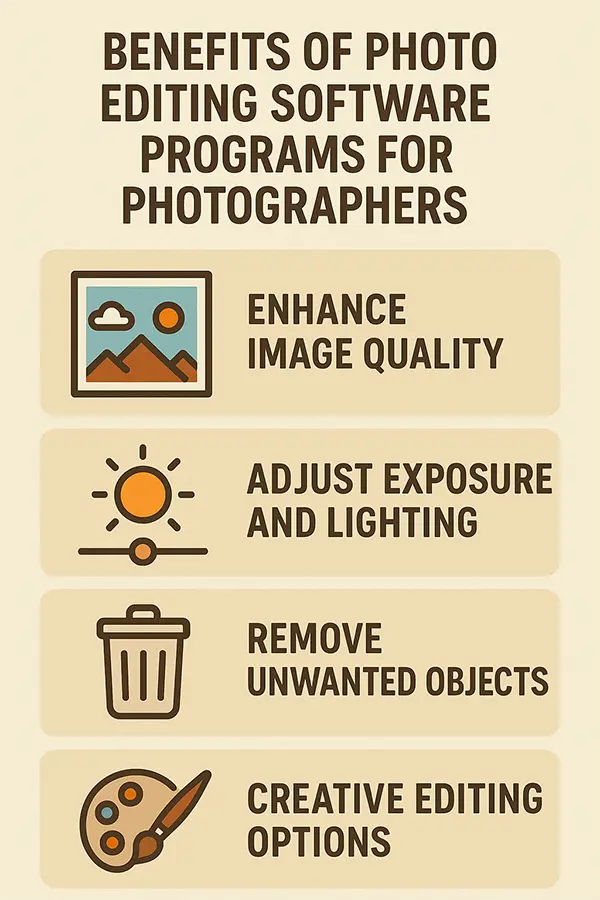KEY TAKEAWAYS
- Luminar Neo is known for its simplicity and innovation.
- DxO PhotoLab offers unmatched lens correction profiles and RAW development tools.
- Capture consists of a RAW processing engine, precise color tools, and tethered shooting capabilities.
- Affinity Photo is a great tool for freelancers and small studios.
- ON1 combines RAW processing, layers, effects, and photo organization in one program.
- Darktable is perfect for users who don’t want to install heavy software.
When we talk about the best photo editing software programs for photographers, Adobe Lightroom is the first tool that comes to mind. Adobe’s market cap is also estimated to be over $151.31 billion.
While it works great, people are constantly looking for better alternatives that offer something unique. But do such tools exist? If yes, what are those? Well, to make things easier for you, I’m here.
In this article, I’ll mention Lightroom alternatives that are best for professionals. Let’s get started.
Luminar Neo perfectly balances innovation and simplicity. This editor was built specifically for photographers. The AI tools and clean interface make complex post-processing tasks accessible even to casual users and hobbyists.
Advanced masking and batch processing allow users to save time without compromising quality. You have more room for creative experiments as repetitive tasks are sent to machines.
A major advantage is that Luminar Neo can also function as a Lightroom plugin. Adobe (and Lightroom in particular) stands out with its advanced file organization and cataloging.
There is a downside: AI features are limited in Luminar Neo. The plugin enables you to expand your creative boundaries without compromising your convenient workflow. Below, you can see why photo editing tools are important.

This photo editor is built on decades of optical research. You are met with the best lens correction profiles and RAW development tools. DxO PhotoLab prioritizes detail and clarity. It will work great for landscape and architecture shots.
Discussions about innovation frequently arise during events like AI Appreciation Day, where the role of artificial intelligence in the creative industries is highlighted. AI is utilized to its full potential, which allows users to achieve impressive outcomes while keeping minimal efforts.
Its DeepPRIME and DeepPRIME XD engines combine noise reduction with demosaicing. This technology allows for restoring photos taken in low light conditions and eliminates the negative consequences of the high ISO. Night and event photographers will appreciate it. The software analyzes image data at a pixel level, reducing noise while preserving fine details.
What is the best photo editing software? For many photographers, it is a program with a RAW processing engine, precise color tools, and tethered shooting capabilities. Capture One matches these criteria. Fashion, commercial, and product photographers rely on it to achieve tonal accuracy and visual consistency across large projects.
Capture One leverages manual control. Its sophisticated color grading system demands a sharp eye to fine-tune hues with precision accuracy. The layer-based adjustments provide flexibility similar to Photoshop. Tethering allows clients to see the results instantly and avoid miscommunication during the shooting process.
What do photographers use to edit photos? They use programs that match their creative needs, proficiency, and, last but not least, budget. Subscriptions can add up quickly. Many photographers are reluctant to commit to ongoing subscription fees, whereas Affinity Photo sets itself apart with a straightforward one-time payment model.
Affinity Photo is especially appealing to freelancers and small studios. The robust tools are available at a lower entry point. With RAW development, advanced retouching, panorama stitching, HDR merging, and compositing tools, users can handle even the most complex visual projects. Affinity does not have an advanced cataloging system like Lightroom, but its feature set can easily conquer any other professional photo editing software.
This program offers a perfect balance between accessibility and professional control. ON1 offers RAW processing, layer-based adjustments, integrated effects, and photo organization in one program. You can maintain a seamless workflow without the hassle of switching between multiple applications.
The program is especially useful for wedding or event photographers. You are met with a smooth workflow along with quick movements between different post-processing tasks. Another strength is its versatility across genres. Whether you’re fine-tuning portraits, enhancing landscapes, or building composites, ON1 Photo RAW easily adapts to your creative style and vision.
This open-source option is perfect for users who don’t want to install heavy software on their computers. Darktable is free, so it is a great choice for people with tight budgets. This tool is heavily focused on non-destructive RAW editing, advanced color management, and tethered shooting.
The toolkit is not poorer than in many paid alternatives. Its modular design allows users to tailor their personalized post-processing environment. The program values control and community-driven development. In case you are new to photo editing, it can take some to come around and use it properly.
Exploring the many alternatives to Lightroom shows that professionals have no shortage of capable options. Every editor has a skill; all they need is a tool that can enhance it.
Studio professionals might lean toward Capture One, while those seeking speed and automation may prefer Luminar Neo or ON1. Individuals who are concerned about budget usually go for Affinity Photo and those who prioritize technical corrections trust DxO.
Take advantage of free trials that are available, experiment with different tools, and choose the solution that helps you deliver the highest-quality results.
Luminar Neo is the best alternative for Lightroom because of its simplicity and AI-based tools, making it ideal for photographers.
Affinity Photo is best for freelancers, offering professional tools, RAW development, HDR merging, and retouching with a one-time purchase model.
Yes, there are various free alternatives for Lightroom, but the best one is Darktable, which is open-source, and supports RAW editing.
